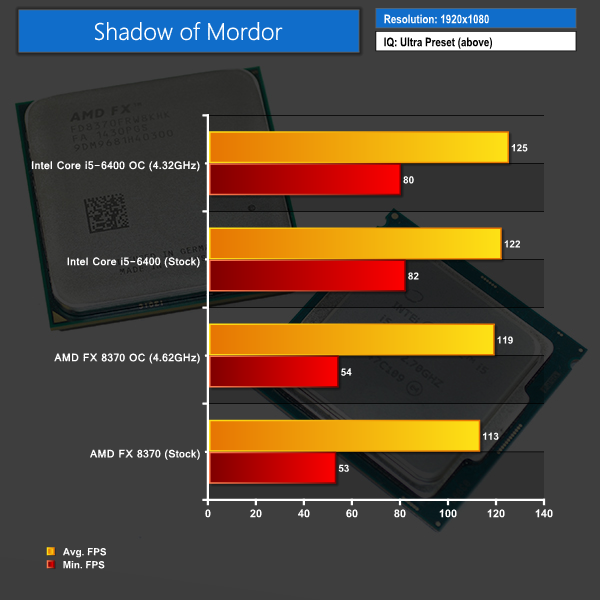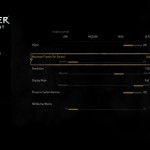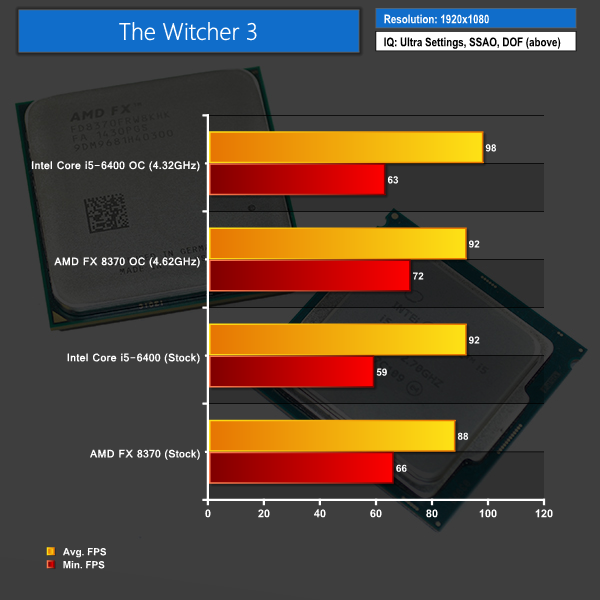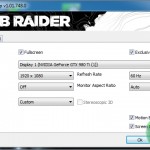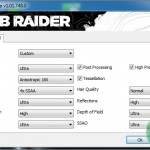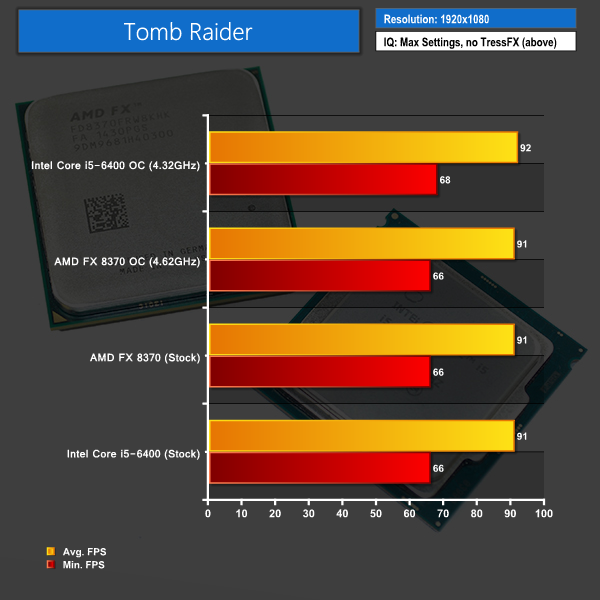Middle Earth: Shadow of Mordor
We used a 1920×1080 resolution and the Middle Earth: Shadow of Mordor built-in benchmark set to ‘Ultra’ quality.
Middle Earth: Shadow of Mordor places the performance onus clearly on the graphics card. The built-in benchmark has very few areas where CPU performance is really stressed. And the game engine doesn't balance the load between CPU cores, either; Intel's chip will have a single core pinned at significantly higher utilisation, while many (usually 3 or 4 out of 8) of the threads on AMD's part will be left idling.
Average frame rates are similar between each configuration on Intel and AMD chips, however there is a distinct advantage for the former when it comes to minimums. Higher performance from the Skylake architecture allows the i5-6400 to better maintain a consistently higher frame rate.
The Witcher 3
Ultra settings were applied for The Witcher 3, with SSAO and Depth of Field enabled. A 1920×1080 resolution was selected.
We manually run through a character-heavy section of the main city in a repeatable manner and use FRAPS to record frame rates.
The Witcher 3's game engine does a superb job of evenly balancing the CPU load across Intel's 4 cores and AMD's 8 cores. Utilisation percentage per core is practically identical for Intel's and AMD's chips throughout the entirety of our test section.
Looking at our chart, it can be seen that the frame rate results differ from the trend we have observed thus far. While Intel's overclocked Core i5-6400 wins the day for average FPS, AMD's 8-core part puts in consistently higher minimum frame rates. There is some variation between runs due to our manual testing method, but the minimum FPS trend remains consistent.
Despite the positive average FPS numbers for Intel's chips, the lower minimums compared to AMD's 8-core part seems to be tied to an area of higher load that forces the CPU utilisation to its maximum. This in turn creates a delay in processing the data which is observed as a drop in the frame rate. The game engine's ability to balance tasks across all of the FX 8370's 8 cores alleviates such a slow down on the AMD part.
So when it comes to The Witcher 3, both the Intel and AMD configurations are positive choices. However, the additional cores offered by AMD's chip, as well as the superb load-balancing optimisation of the game's engine, means that the FX 8370 may be better equipped for handling areas of increased character interaction.
Tomb Raider
We test Tomb Raider at 1920×1080 using the maximum quality settings, with TressFX manually disabled. The in-game benchmark is used.
Tomb Raider gives us a look at how each of the CPU configurations handles gaming on a well-optimised, stable AAA title from a few years ago. Crystal Dynamics' engine found in Tomb Raider just works, and it works well. Multi-GPU scaling is generally good, resource usage is consistent, and the benchmark numbers are repeatable.
Any of the CPU configurations shown in the above chart offer enough performance to max-out the Tomb Raider benchmark with a GTX 980 Ti. This is good news to gamers whose favourite AAA titles may have launched a few years ago, as CPU performance from either of these chips is unlikely to be a limiting factor.
 KitGuru KitGuru.net – Tech News | Hardware News | Hardware Reviews | IOS | Mobile | Gaming | Graphics Cards
KitGuru KitGuru.net – Tech News | Hardware News | Hardware Reviews | IOS | Mobile | Gaming | Graphics Cards



